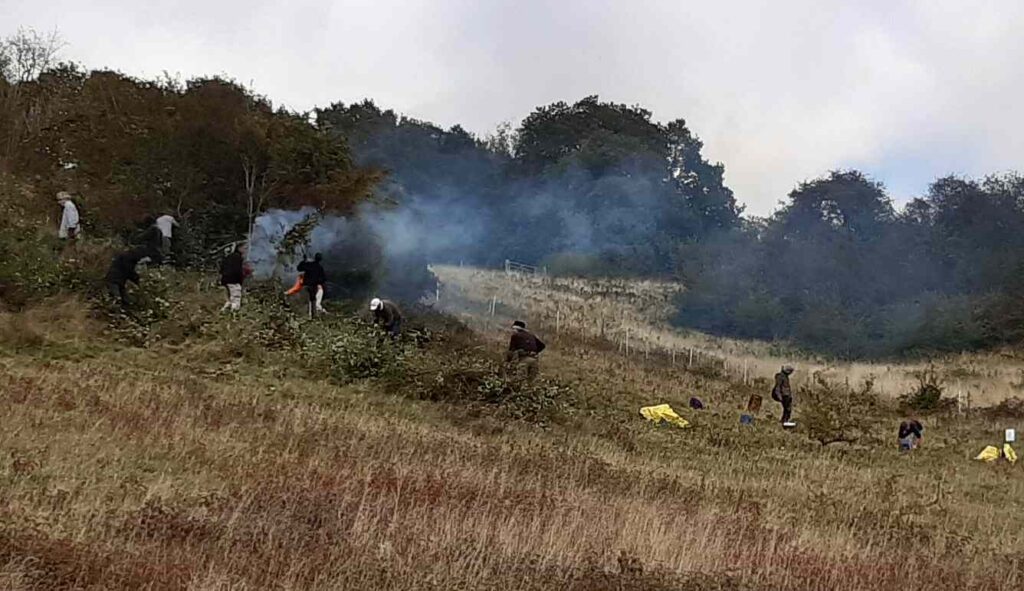
Ravens, several in aerobatic pairs, wheeled overhead, as did a Buzzard and quite a few Red Kites.
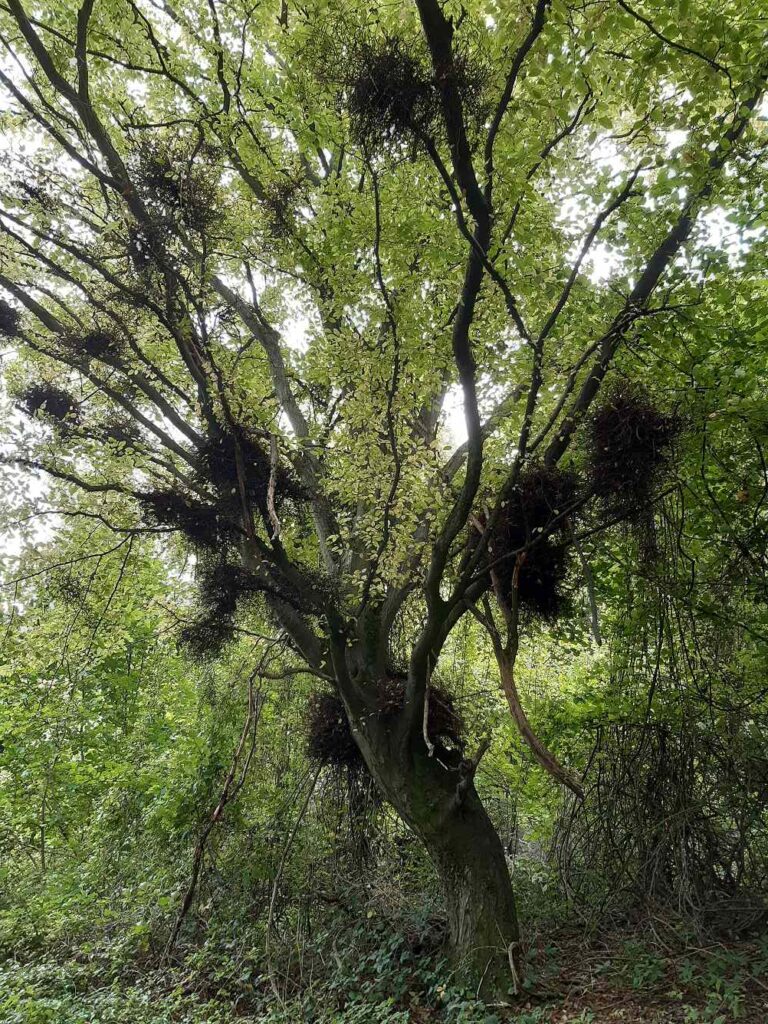
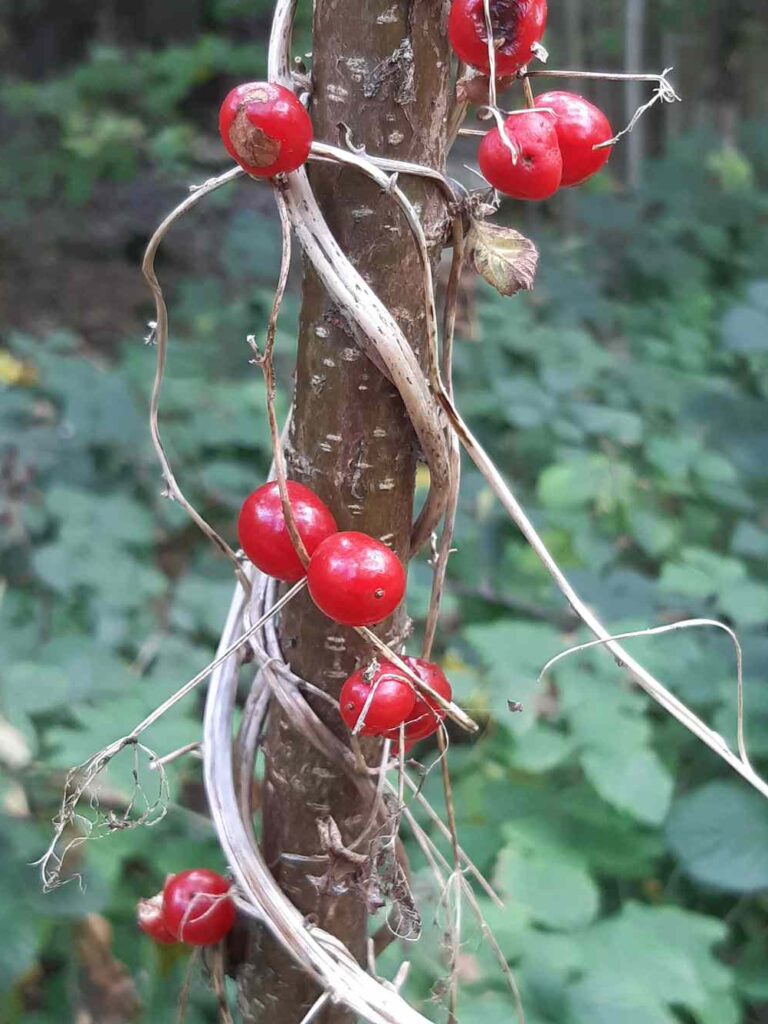
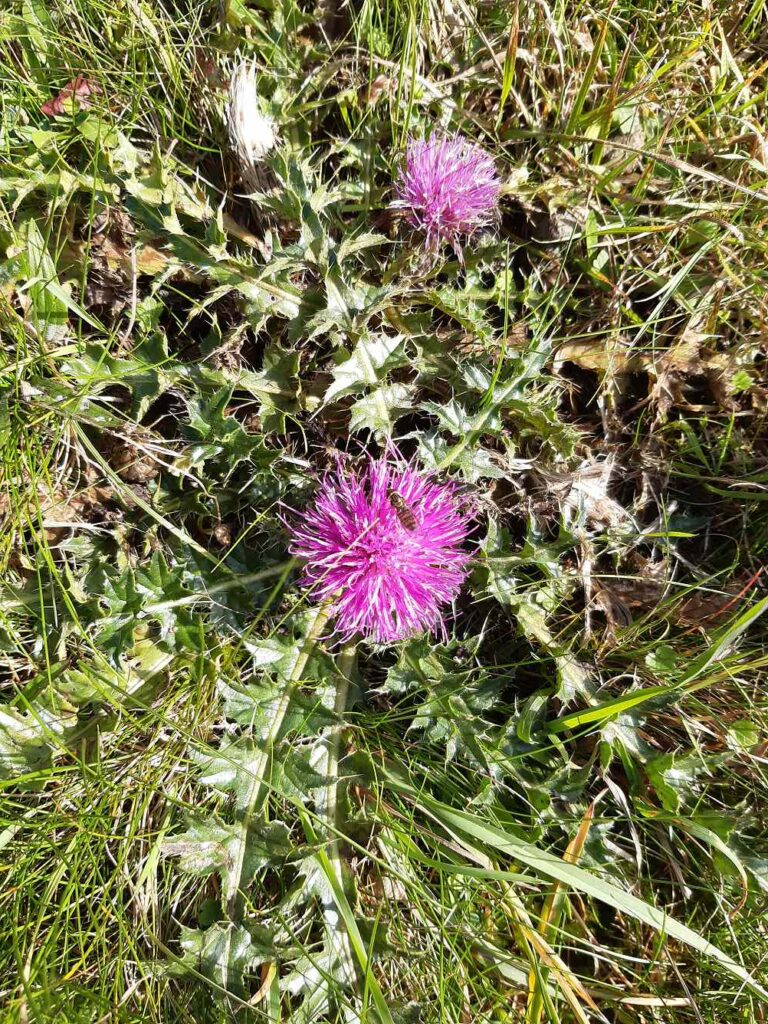
A Bullfinch wheezed its odd “Deu” call from a hawthorn bush as we had our picnic.
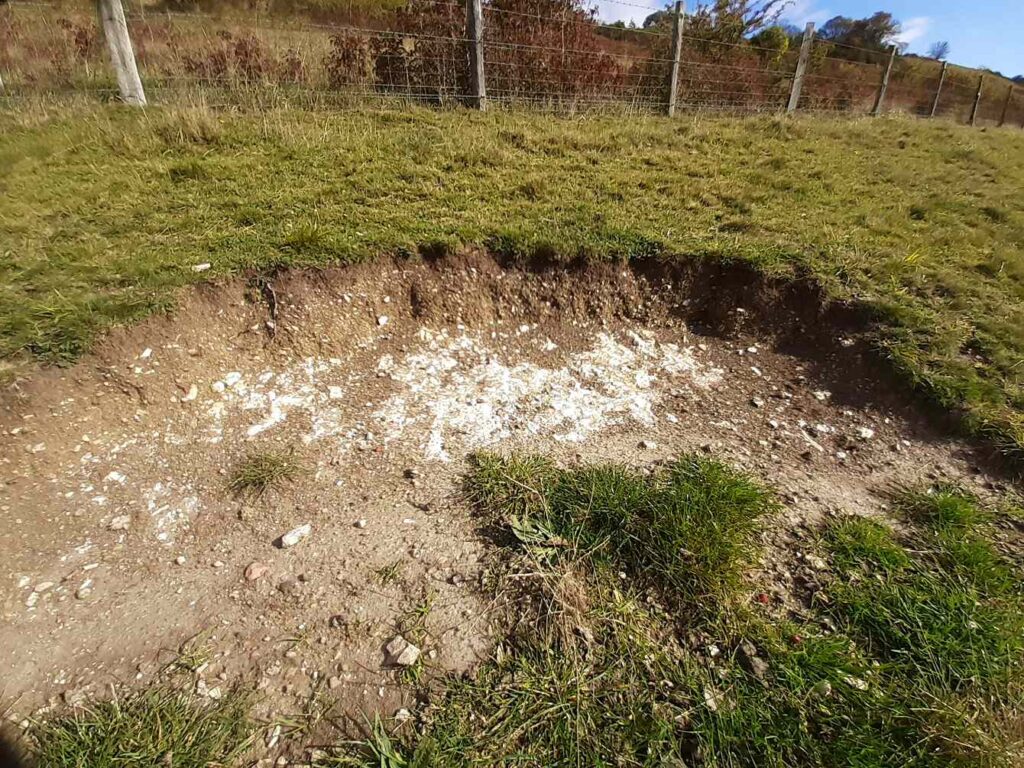
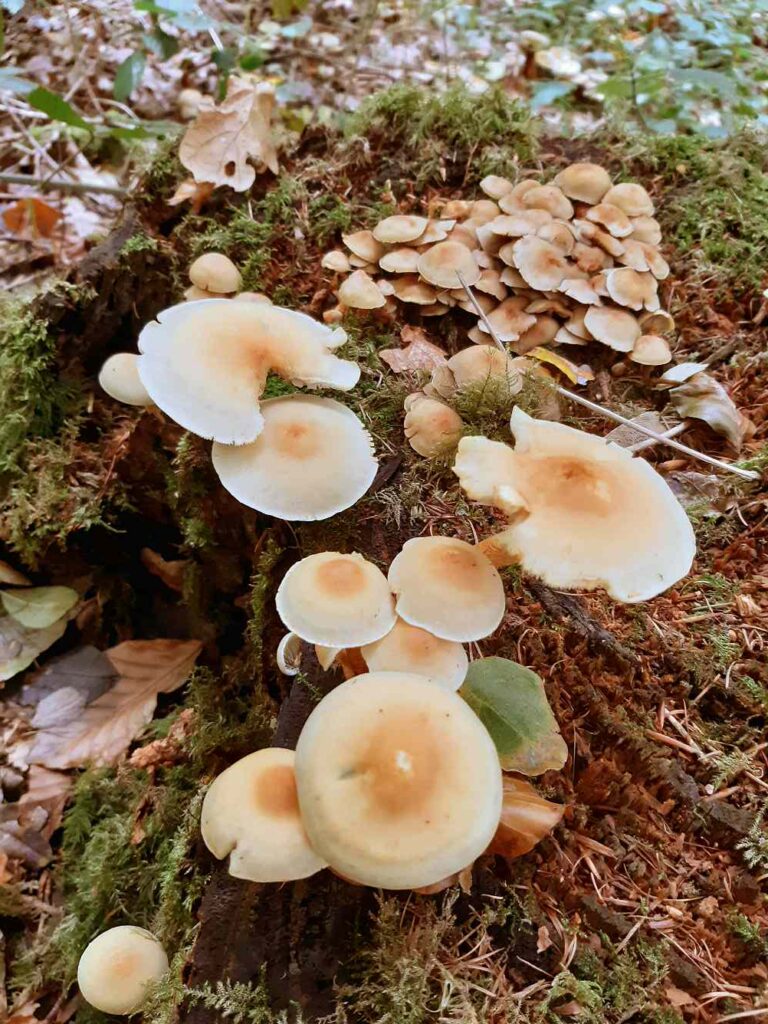
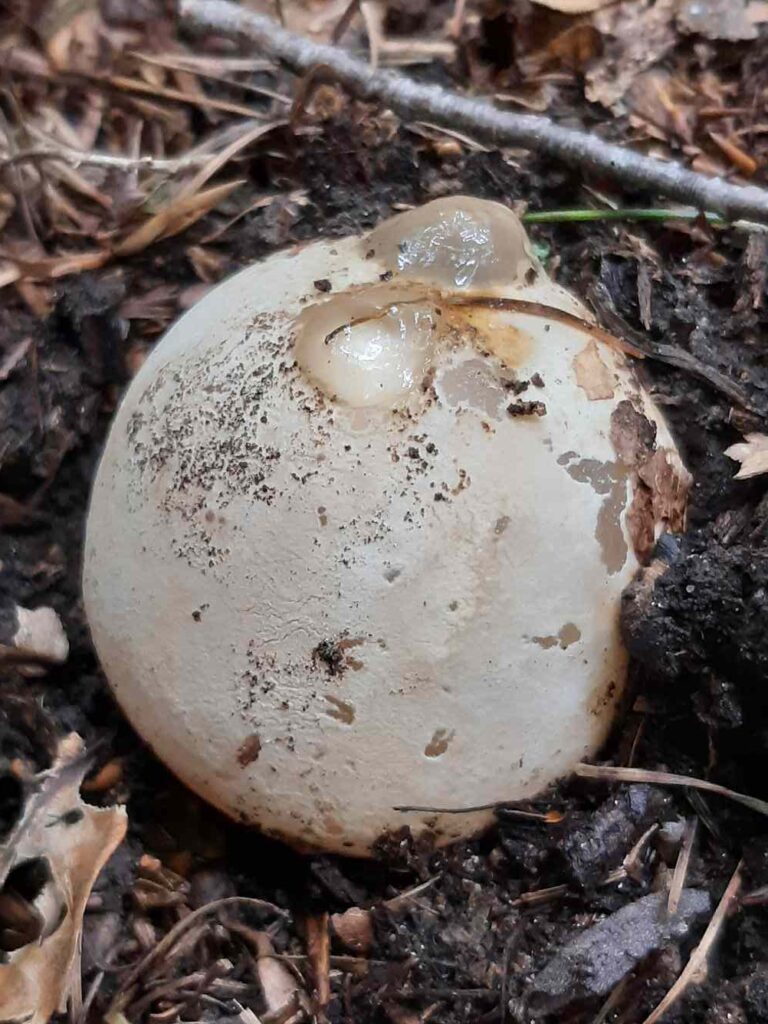

Ravens, several in aerobatic pairs, wheeled overhead, as did a Buzzard and quite a few Red Kites.



A Bullfinch wheezed its odd “Deu” call from a hawthorn bush as we had our picnic.



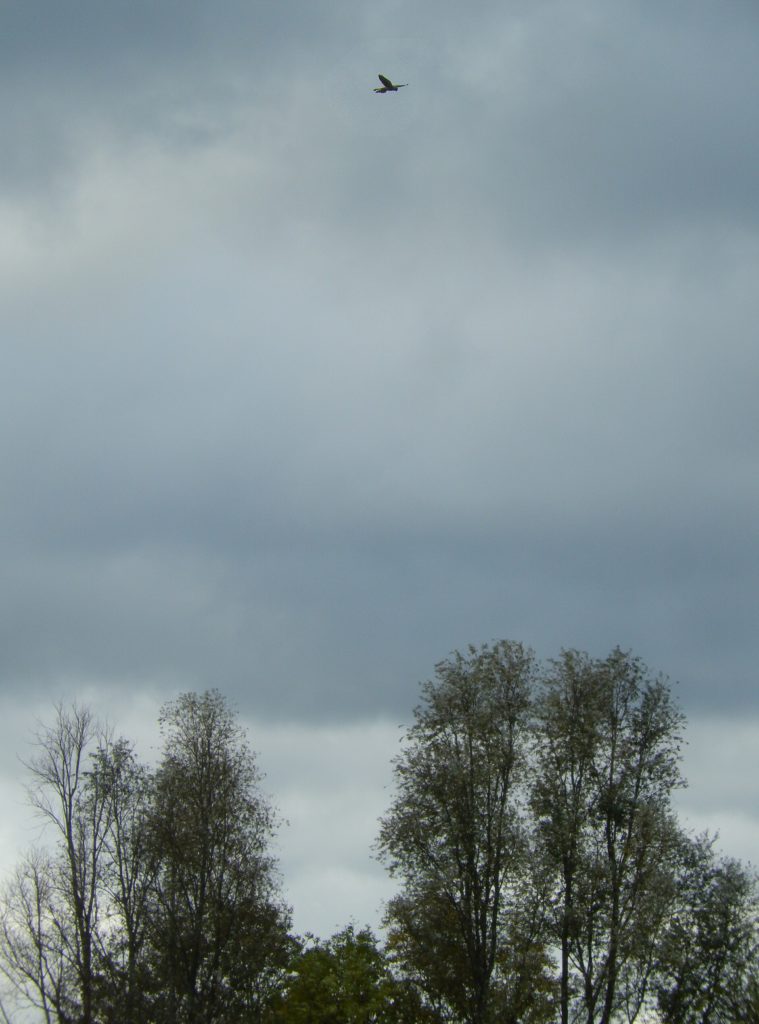
Winter showed her wizened hand today. The bright sunshine of the morning quickly gave way to cloud under a chilly northerly wind. Zipping up my coat, I wondered if I’d see anything worth remarking, and plodded up the path in the flat light. I looked left at the river Colne, and a plump Water Vole splash-dived among some juicy Iris leaves that I guess it had been cutting. Once a common enough sighting, it’s now something very special.
The main lake was almost devoid of birds, a distant swan, a few black-headed gulls and a coot or two more or less summing it up, a dull day (apart from the vole). I rounded a bend and came face to face with a very fresh-faced, brightly-coloured fox. It stared at me for a glorious second, then turned tail and fled. Given the long narrow neck of land between the river and the lake, it must have run quite a way to escape.
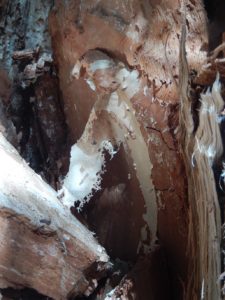
Not much further, a riverside willow had fallen on to an ancient hawthorn, forming a striking arch. The broken trunk was quite hollow, only a couple of inches of the newest wood remaining as a thin fragile tube. These large trees grow rapidly to a considerable size — and suddenly fall. The wood is soft, and it seems that saprophytic fungi (or perhaps parasitic) can speedily destroy it. This tree was layered with a dry papery sheet of whitish mycelium, presumably whatever species it was that rotted the trunk hollow.
A dark brown Buzzard, almost without markings, floated broad-winged just above the small lakeside trees, almost close enough to touch.
Beside me, the lake suddenly exploded into a mass of pattering feet on water, as a dozen Gadwall rushed to take off. Perhaps these newly-arrived birds are from the frozen north, unused to the slightest human disturbance.
The end of the lake held a score of Tufted Duck, their numbers too increasing rapidly now, again presumably from colder lands to the north or east.
At the steel bridge, a Bullfinch repeated its insistent call, Deu, Deu. And over the grassy meadow, a Kestrel floated silently, hovered, drifted effortlessly upwind to hover again.
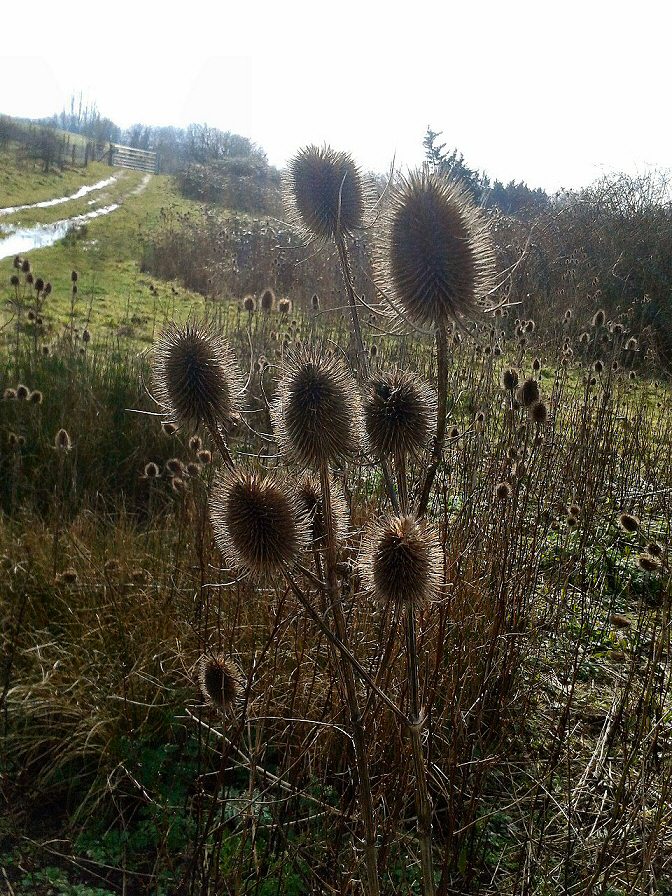
It was cold out today, and I was glad of fleece, warm coat, woolly hat and gloves — not to mention gumboots through the clogging mud, the worst I’ve seen in many walks at Wraysbury Lakes.
But when the sun came out, it was beautiful, and I hope I’ve captured a little of that wintry beauty for you (and some of the puddled paths) with this photo of last year’s dried-out Teasels.
Just as I was about to take the photo, a flash of white from two largish finches caught my eye, and I grabbed my binoculars. Luckily, they landed in a bare thornbush, and showed themselves to be a male and a female Bullfinch, their black caps, red chests and white rumps splendidly visible as they sat a while, occasionally leaning right forwards to peck at the buds. They flew off to another bush, giving me the best views I think I ever had of the male/female differences at rest and in flight. The male really did glow red.
Up on the horse hill, a flock of some 50 Goldfinches flickered overhead. A Green Woodpecker called in the distance, as did two Mistle Thrushes, their loud, monotonous, ringing cries carrying across the wet ground. A solitary Redwing was all that was left of the winter flocks. Two streaky brown Linnets flew across.
A cormorant flapped heavily overhead, quite goose-like in front view but obvious enough in outline as it went by. Down at the nearly birdless lake, 5 Goldeneye brightened up the view, with a few distant Shoveler.
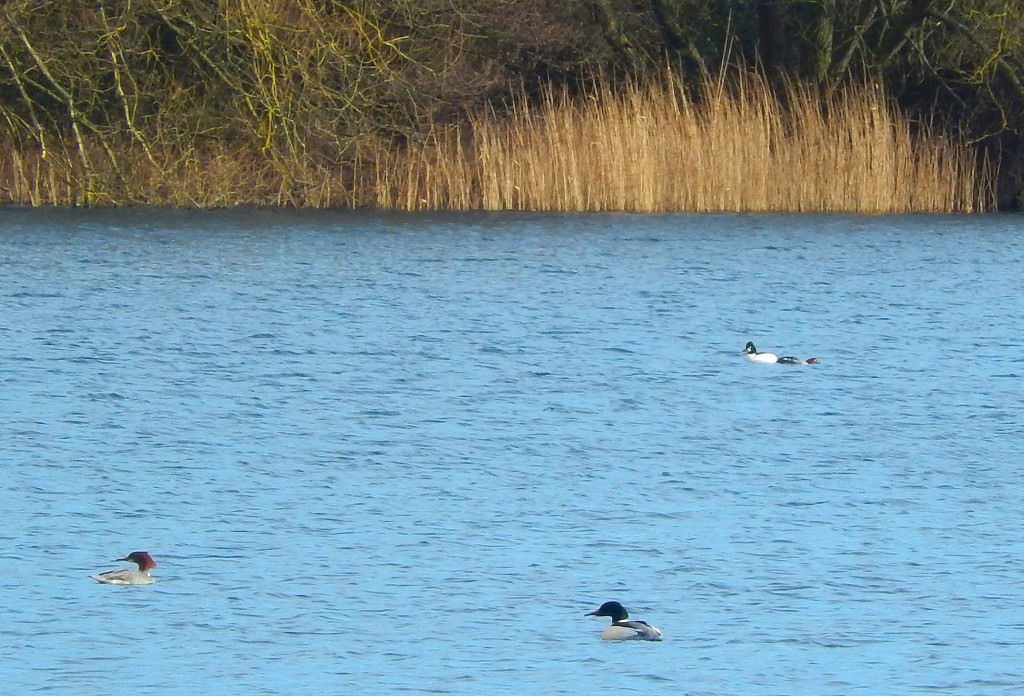
After the bitter cold of the New Year, down to a surprising -12C in London, suddenly spring (as it were) is back in the air, and the Daffodils are resuming their progress towards full bloom in gardens and on roadsides.
The warmth and sunshine tempted me out to Wraysbury. With the heavy rain and perhaps also the rapid changes of temperature, a large Poplar had fallen across the river, forming a minor weir.
On the path, a Muntjac deer had left its tiny prints in the soft mud. Unlike a lot of other mammals, at least this one is readily identifiable from its print, the two small sharp slots of its slim feet not mistakable for anything else.
The lake, which had been full of birds as big as Swans last time I visited, was almost empty: a few Coots, some Great Crested Grebes, a Black-Headed Gull, a few roosting Cormorants, a few Tufted: and happily two of the area’s specialities, three pairs of Goosander, and nine Goldeneye (including three males).
A Kestrel hovered and dropped slowly after a small mammal in the long grass. A Redwing flickered away around a corner. A Song Thrush sang sweetly from a thicket. One or perhaps two Bullfinches gave their distinctive “Deu” call from the middle of a bush. Half-a-dozen Fieldfares chattered and skittered about from the top of one bare thornbush to another. A few Wood pigeons and Crows looked out warily.
Winter has definitely set in. The spinach beet in my garden was all frozen, the air at -3 Celsius and the ground presumably rather colder under a clear night sky. Fearing it might all be lost, I picked some and went out to see what there might be today down at Wraysbury Lakes.
Almost the first thing I saw was a bulky little finch high in a waterside willow. It called ‘deu’ quite loudly, fidgeted about and flew before I could focus on it. Still, there was no doubt it was a Bullfinch: the call, its shape, its solitary habits, and its shyness all pointing the same way. It is never an easy bird to see, even where it is resident (it is regularly ringed at Wraysbury). Leafless trees and the rising energy of the coming breeding season provide one of the few opportunities to catch a glimpse of this less well known finch.
At first sight there seemed to be no birds out on the lake. Finding a small illicit patch cleared by a fisherman I set up the telescope and looked about. A Pochard or two; some Tufted Duck and Coot; a male Goldeneye… but the Smew and Goosander of a week or two ago were nowhere to be seen. The old truth is that you never know what you’ll see: but it’s often a delightful surprise, and almost always energizing to be out in nature.
I walked on and looked about again: some rather white ducks caught my eye in the distance. Two male Goldeneye, each with a female in tow. The males threw their heads forward a few times, pretended to preen; one threw his head back and forth, then lowered his head and stretched it out and in. His female swam after him, her head resting on her back as if she were asleep! But she was certainly watching the display, and swimming to keep up a few lengths behind.
A loud squawk betrayed a Heron; it flapped out of cover at the end of the lake and landed on the bank behind the ducks. A few Mallard panicked from the water below me; a Moorhen briefly took flight.
Away from the lake, a few Robin and Dunnock hopped in and out of the bushes. A solitary Fieldfare or two gave their chack-chack call from the hawthorns, watchful and flighty. Another Bullfinch calling, this time atop a bare hawthorn bush – or maybe the same bird, half a mile on – and again I couldn’t get binoculars on to it, despite my stealthiest movements: it had surely seen me at once, and just took a few seconds to decide when to flee.
A Kestrel hovered beyond the tall poplars: no Buzzards or Red Kites today, but really the Kestrel feels almost more special than them, its numbers declining across Britain.
A few Jackdaws, Carrion Crows and Wood Pigeons on the horses’ hill; some Fieldfares in the trees, with a single Redwing; a Stock Dove flying low.